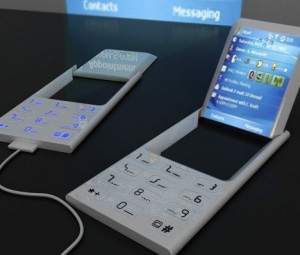

Blackview and Voga provide projection sizes up to 70 inches at a distance of about two meters.
Cell phone projector 720p#
Projectors all models provide 720p (1280 x 720) HD image at brightness of 50 ANSI Lm with projection size up to 100 inches.
Cell phone projector portable#
However, many users prefer the portable 2-in-1 combo solution despite the price / performance loss.
Cell phone projector pro#
At the same time, the specs of Xiaomi Redmi Note 8 Pro smartphone with price $ 200-250 and ultra-portable LG PH30N CineBeam LED projector with price $ 400 correspond to a much higher level. For example, the price of Blackview Max 1 with medium specs ranges from $ 500-650. Indeed, comparison of specs and price of combo models radically loses compared to buying separate devices. They probably can’t compete successfully with the sheer number of great modern mini projectors and smartphones. In 2020, the range of laser projector phones on offer has remained largely unchanged. Unfortunately, unlike camera phones and gaming smartphones, this process has practically stopped. Of course, many experts predicted the rapid and successful development of this direction. Laser projector phone vs projector + phone At the same time, some sellers offer Voga V versions with 3GB/32GB of RAM/storage for about $ 400. Accordingly, their comparison is most relevant. In fact, the list of the most popular models includes the Voga V line and Blackview Max 1. Therefore, despite the wide range of names, the number of real models is very limited. But considering the design, specs and announcement dates, Moviphone and Qantum V are actually clones of the second generation Voga V.īut in some countries these models are known as Allview X4 Soul Vision, Movi, Neffos, etc. Unfortunately, in recent years, matching models to brands has become radically difficult due to high commercial dynamics. Moviphone was introduced by Wireless Mobi Solution (WMS) company from San Diego. This brand is the international version from the Shanghai Ragentek Group, which is known for budget smartphones under the Qingcheng (Green Orange) brand for the Chinese market. Blackview Max1īut Voga also did not go unnoticed. Blackview Max 1 became one of the sensations at CES 2018. microelectromechanical systems (MEMS)Īs a result, already in 2018, several companies presented smartphones of a new generation with a MEMS-based projector, including Blackview Max 1 and Voga-V2. It uses MEMS scanning mirrors, red, green, blue and infrared lasers, optics and electronics to project or capture images. As known, this laser scanning technology was developed by the American company MicroVision for projection and 3D sensing. MEMSīut the development of microelectromechanical systems (MEMS) technology has given a powerful impetus to this direction. Unfortunately, low image quality due to low brightness has become a decisive factor in limiting their popularity. Over the next few years, Sony offered the Sony MP-CL1, CL1A and MP-CD1 with this option. Subsequently, the company developed Galaxy Beam 1 (15 ANSI lumens at 640 x 360) in 2012 and Beam 2 (20 ANSI lumens at 800 x 480) in 2014. In particular, at CES 2009 Samsung introduced the first smartphone W7900 with a projector. Of course, phone developers have not missed new opportunities by developing phones with a built-in projector. As a result, the modern market offers a huge number of different mini-, pico- and pocket ultra-portable projectors. The latter factor has become especially important, allowing companies to abandon powerful fans for cooling traditional UHP (Ultra High Efficiency) mercury lamps. Miniature size, long life (20,000-30,000 hours vs 6,000 for traditional lamps), and low heat generation allowed engineers to develop mini projectors.
.jpg)
Rapid advancement of laser LEDs opened up new possibilities for projector developers who began to actively use them as light sources. Gaming smartphones and camera phones perfectly exemplify this trend. Therefore, companies are constantly expanding it with smart options and innovative technologies. Functionality has long been a prerequisite for the successful competition of any modern consumer electronics.


 0 kommentar(er)
0 kommentar(er)
